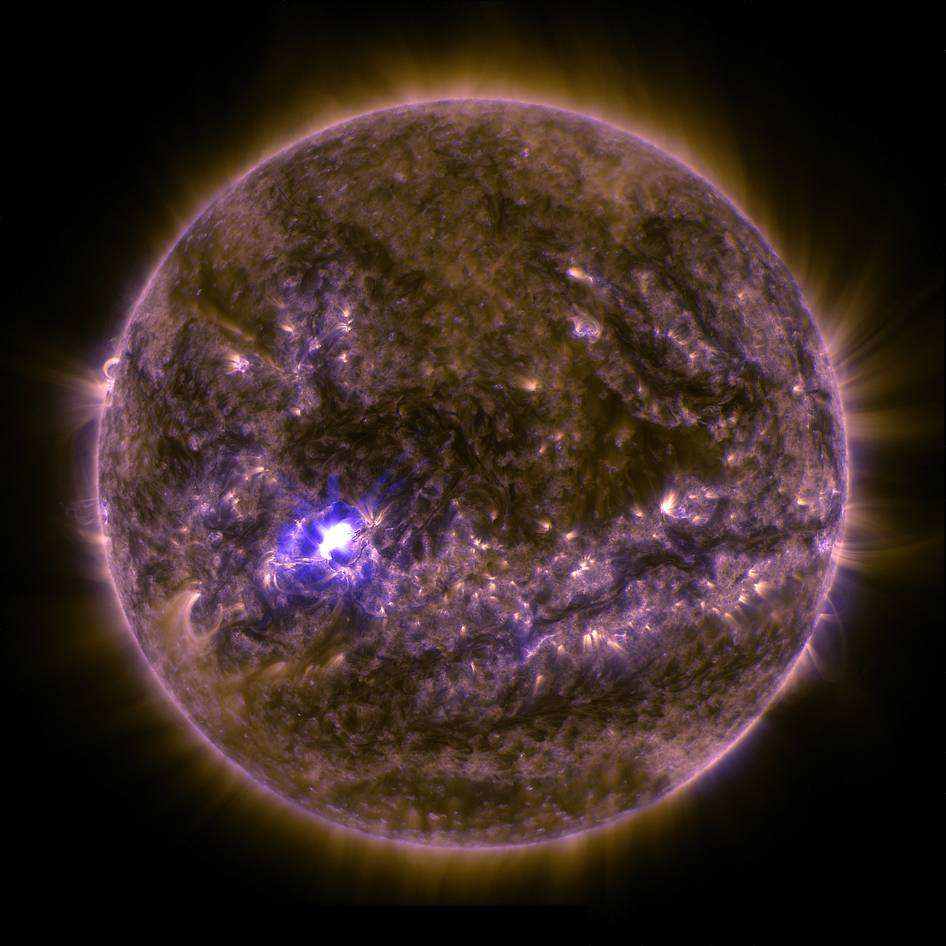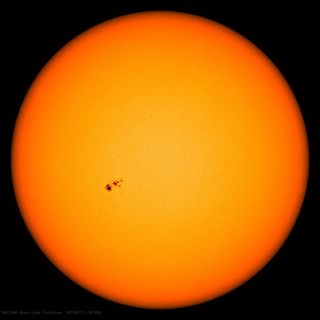
The sun unleashed its first superpowerful flare of the year on Wednesday (March 11), and the intense eruption was aimed directly at Earth, space weather experts say.
The monster X-class solar flare, the strongest category of sun storms possible, peaked at 12:22 p.m. EDT (1622 GMT) today, originating from a sunspot known as Active Region 12297 (AR12297). NASA's Solar Dynamics Observatory captured stunning video of the huge X-class solar flare as it erupted.
AR12297 has fired off a number of medium-strength flares over the last few days. Wednesday's event ratcheted things up a notch, causing an hour-long blackout in high-frequency radio communications over wide areas, according to scientists with the U.S. Space Weather Prediction Center (SWPC) in Boulder, Colorado. The SWPC is overseen by the National Oceanic and Atmospheric Administration.
"An R3 (Strong) Radio Blackout peaked at 1622 UTC (12:22pm EDT) today, March 11," SWPC officials wrote in an online update. "This is yet another significant solar flare from Active Region 12297 as it marches across the solar disk. This is the largest flare the region has produced so far, after producing a slew of R1 (Minor) and R2 (Moderate) Radio Blackouts over the past few days."
The Wednesday flare registered as an X2.2 sun storm on the scale used to measure solar tempests. Scientists classify strong solar flares into three categories: C, M and X, with C being the weakest, M being mid-level and X the strongest. X flares are 10 times more powerful than M flares. X2 and X3 flares are twice and three times as potent, respectively, as X1 flares.

Solar flares are often accompanied by coronal mass ejections (CMEs), enormous clouds of superheated plasma that streak through space at millions of miles per hour. While the radiation from a flare reaches Earth in just minutes, it typically takes CMEs several days to get here. Powerful Earth-directed CMEs can wreak havoc, causing geomagnetic storms that can disrupt power grids and satellite navigation.
It's unclear at the moment if a CME is associated with today's event. However, the SWPC has already issued a minor geomagnetic storm warning for Friday (March 13) as a result of three CMEs the sun unleashed on Monday (March 9).
Get the Space.com Newsletter
Breaking space news, the latest updates on rocket launches, skywatching events and more!
Follow Mike Wall on Twitter @michaeldwall and Google+. Follow us @Spacedotcom, Facebook or Google+. Originally published on Space.com.
Join our Space Forums to keep talking space on the latest missions, night sky and more! And if you have a news tip, correction or comment, let us know at: community@space.com.

Michael Wall is a Senior Space Writer with Space.com and joined the team in 2010. He primarily covers exoplanets, spaceflight and military space, but has been known to dabble in the space art beat. His book about the search for alien life, "Out There," was published on Nov. 13, 2018. Before becoming a science writer, Michael worked as a herpetologist and wildlife biologist. He has a Ph.D. in evolutionary biology from the University of Sydney, Australia, a bachelor's degree from the University of Arizona, and a graduate certificate in science writing from the University of California, Santa Cruz. To find out what his latest project is, you can follow Michael on Twitter.